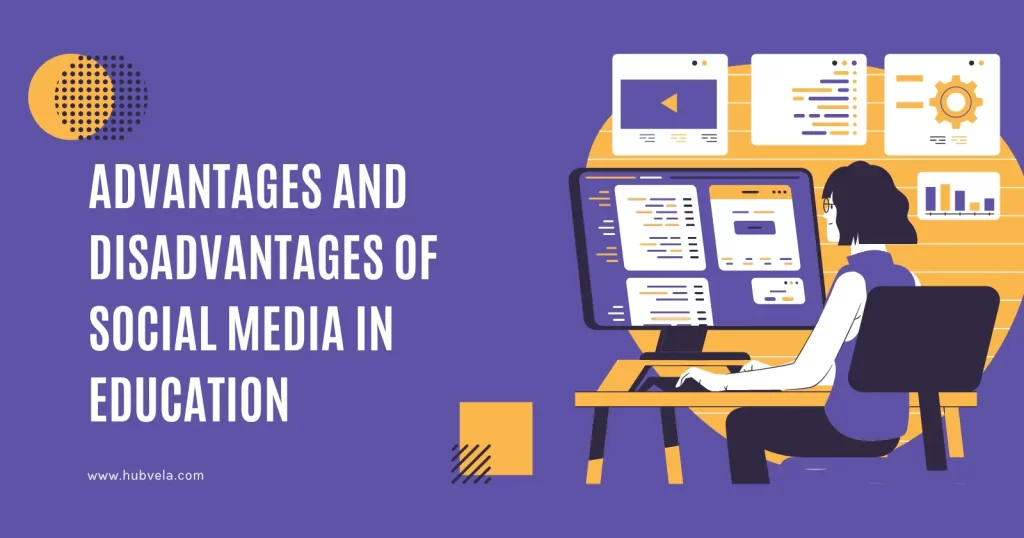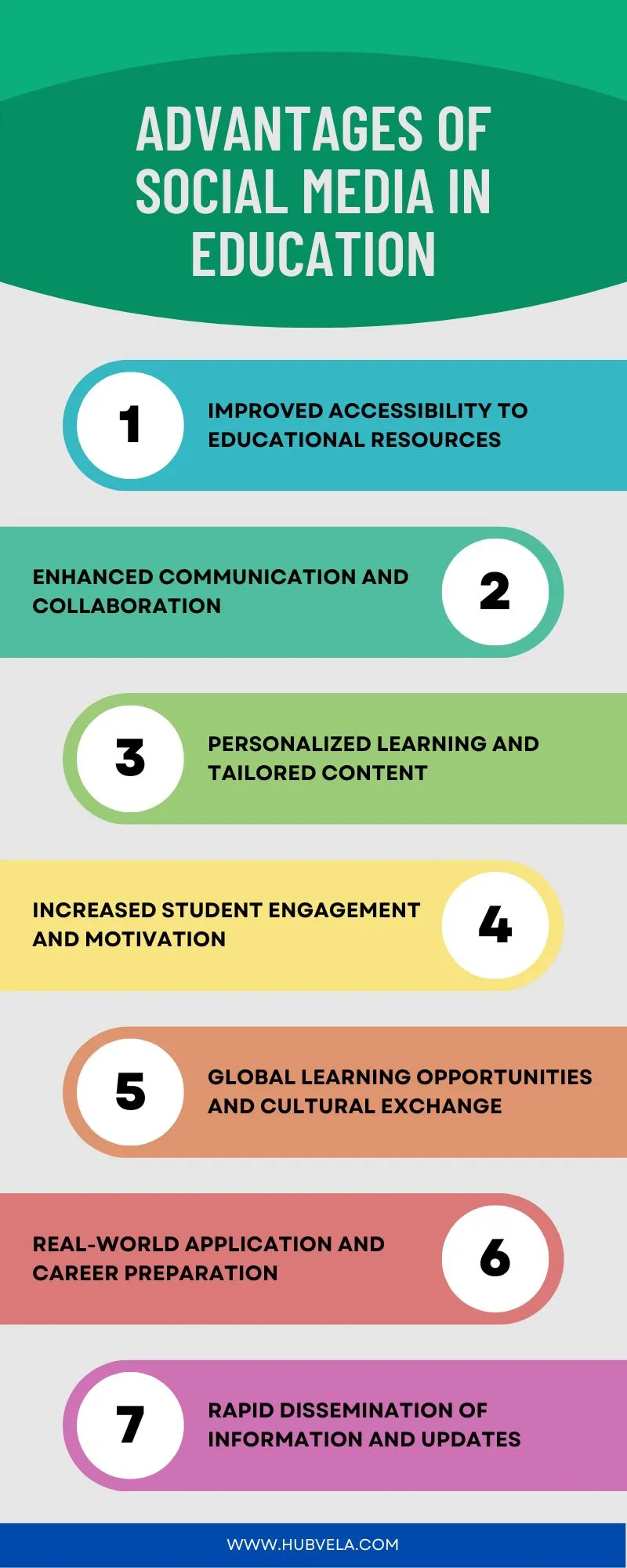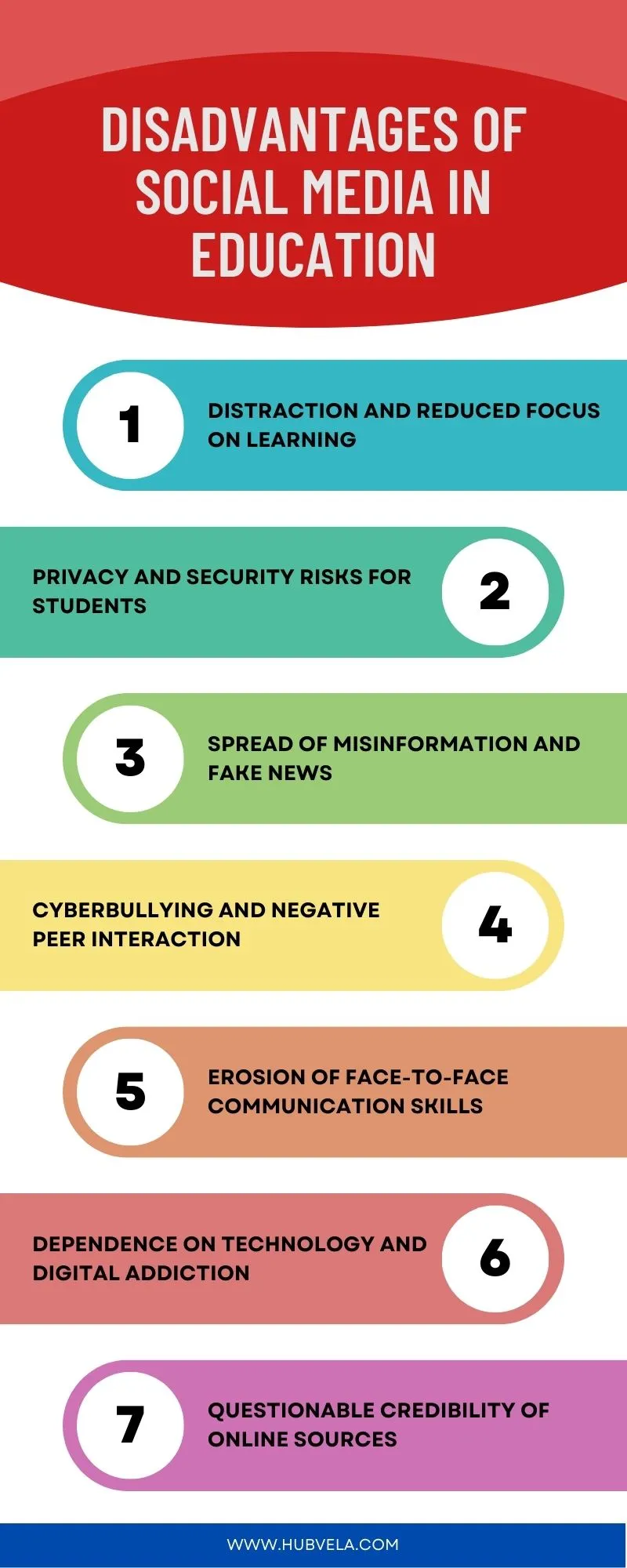Social media has become an integral part of our daily lives, and its impact on education is undeniable. While there are many advantages to using social media in education, there are also some disadvantages that need to be considered.
In this article, we will explore the pros and cons of social media in education. We will examine how social media can be used as a powerful teaching tool, how it can increase connectivity among students, and how it can provide current information and updates to students.
On the other hand, we will also discuss how social media can be a major distraction in the classroom, how it can open the doors for cyberbullying, and how it can be used improperly in the classroom.
By the end of this article, you will have a better understanding of the advantages and disadvantages of social media in education and how it can be used effectively to enhance learning.

--Advertisement--
Advantages of Social Media in Education
Social media has become an integral part of our daily lives, and its impact on education has been significant. The use of social media in education has been gaining popularity in recent years, and many educators are exploring its potential benefits.
Social media platforms provide a smoother and more direct communication tool between students, teachers, and parents, allowing them to check in, ask questions, and respond to each other.
In addition, social media fosters collaboration among students, allowing them to work together to achieve common goals. The use of social media in education has also been shown to improve academic performance.
We will explore the advantages of social media in education and how it can be used to enhance the learning process.

1. Improved Accessibility to Educational Resources
Improved Accessibility to Educational Resources is a significant advantage of using social media in education. With the integration of social media platforms in the classroom, students have easier access to a wide range of educational resources.
Social media allows teachers to share relevant articles, videos, and other learning materials with their students, making it convenient for students to access these resources at any time and from anywhere.
Additionally, social media platforms provide a space for students to collaborate and share their own educational content, allowing for a more interactive and engaging learning experience.
This improved accessibility to educational resources not only enhances students’ learning but also empowers them to take control of their own education.
2. Enhanced Communication and Collaboration
Enhanced Communication and Collaboration is another significant advantage of incorporating social media in education. Social media platforms provide a seamless and direct communication channel between students, teachers, and parents, allowing for easy interaction and the exchange of information.
This improved communication fosters a sense of community and connectivity within the educational environment, enabling students to seek clarification, ask questions, and receive timely feedback from their teachers.
Additionally, social media facilitates collaboration among students, allowing them to work together on projects, share ideas, and provide peer support.
This collaborative learning approach not only enhances students’ understanding of the subject matter but also promotes critical thinking and problem-solving skills.
The enhanced communication and collaboration facilitated by social media in education create a more engaging and interactive learning experience for students.
3. Personalized Learning and Tailored Content
Social media platforms offer the opportunity for personalized learning experiences, allowing students to tailor their educational content to their individual needs and preferences.
With the ability to create and curate their own content, students can engage with the material at their own pace and in a way that resonates with them. This customization fosters a sense of ownership and empowerment in their learning journey.
Additionally, social media platforms provide access to a vast array of educational resources, allowing students to explore diverse perspectives and interests beyond the traditional classroom setting.
This personalized approach to learning not only enhances student engagement and motivation but also promotes critical thinking and creativity.
By leveraging social media for tailored content, educators can cater to the unique learning styles and interests of their students, creating a more effective and enriching educational experience.
4. Increased Student Engagement and Motivation
Numerous studies have highlighted the positive impact of social media on student engagement and motivation. By integrating social media platforms into the learning environment, educators can create a more interactive and dynamic experience for students.
Social media provides a space for students to actively participate in discussions, collaborate with peers, and share their ideas and insights.
This level of engagement fosters a sense of ownership and enthusiasm for learning, as students feel more connected and invested in the educational process.
Moreover, social media platforms offer various multimedia tools, such as videos, images, and interactive content, which can capture students’ attention and enhance their motivation to learn.
The use of social media in education has shown promising results in increasing student engagement and motivation, ultimately leading to improved academic outcomes.
5. Global Learning Opportunities and Cultural Exchange
Social media has been found to increase student engagement and motivation, which is a crucial advantage of incorporating social media in education.
Social media platforms provide a space for students to actively participate in discussions, collaborate with peers, and share their ideas and insights.
This level of engagement fosters a sense of ownership and enthusiasm for learning, as students feel more connected and invested in the educational process.
Moreover, social media platforms offer various multimedia tools, such as videos, images, and interactive content, which can capture students’ attention and enhance their motivation to learn.
By leveraging social media for increased student engagement and motivation, educators can create a more dynamic and interactive learning experience for students, leading to improved academic outcomes.
6. Real-World Application and Career Preparation
Social media platforms provide students with opportunities to engage with real-world applications of their learning and prepare for their future careers.
By connecting students with resources from experts around the world, social media allows them to gain insights and perspectives beyond the classroom.
It also facilitates communication and collaboration between classmates, enabling them to work on projects and share ideas in a more interactive and dynamic manner.
Additionally, social media platforms can serve as a platform for students to showcase their work, build a professional online presence, and network with professionals in their field of interest.
This exposure to real-world scenarios and career-related opportunities through social media enhances students’ understanding of the practical applications of their education and equips them with valuable skills for their future endeavors.
7. Rapid Dissemination of Information and Updates
Social media platforms provide a fast and efficient way to disseminate information and updates to students.
Educators can use social media to share announcements, reminders, and other important information with their students in real time, ensuring that students are always up-to-date with the latest news and events.
Additionally, social media platforms provide a space for students to ask questions and receive timely feedback from their teachers, further enhancing the learning experience.
Social media can also be used to disseminate research findings and other educational resources to a wider audience, promoting knowledge sharing and collaboration.
The rapid dissemination of information and updates facilitated by social media in education creates a more efficient and effective learning environment for students and educators alike.
Disadvantages of Social Media in Education
Social media has become an integral part of our daily lives, and its influence is felt in almost every aspect of our lives, including education.
While social media has its advantages, it also has its disadvantages when used in the classroom. We will explore the disadvantages of social media in education.

1. Distraction and Reduced Focus on Learning
Distraction and Reduced Focus on Learning are some of the main disadvantages of social media for students in education.
Social media platforms are designed to be engaging and keep users coming back for more, which can lead to students frequently checking their social media accounts instead of focusing on their academic tasks.
This constant distraction can interfere with their ability to concentrate and complete their assignments, resulting in reduced productivity. Moreover, the excessive use of social media can break students’ motivation and concentration in their studies.
Instead of dedicating their time and energy to learning, students may become dependent on social media and prioritize it over their educational goals. This can lead to a decline in academic performance and a loss of creativity.
Additionally, social media provides easy access to information, reducing students’ searching capability and reliance on traditional sources like books.
Social media can be a significant distraction and hinder students’ focus on learning, impacting their academic progress.
2. Privacy and Security Risks for Students
Social media can pose privacy and security risks for students, as they may be more likely to share personal information or sensitive material online.
This can include things like their full name, address, phone number, or location, as well as photos, videos, or other personal content.
To minimize the risks of a loss of privacy or compromise of personal safety and security on social media, students should be careful about what they share online and consider the potential consequences of their actions.
They should also be aware of their privacy settings on social media and ensure that they are set to the highest level of protection.
Teachers using social media to connect with students can also raise privacy concerns, as children younger than 13 are prohibited from signing up for many social media platforms due to data collection laws.
Parents are also concerned about the digital safety of students, with many reporting concerns about the privacy and security of data collected by schools.
3. Spread of Misinformation and Fake News
The spread of misinformation and fake news is a major disadvantage of social media in education. False information diffuses faster and farther than true information, particularly in the context of social media.
The use of digital platforms to share things that are believed to be true when they may not be can have a powerful ripple effect, influencing others to see them as facts.
Exposure to misinformation can reduce trust in the media more broadly, making it tougher to know what fact or fiction in the future is. The prevalence of social media in spreading disinformation has recently taken precedence in the discussion of the effects of social media.
The spread of disinformation could incite political violence, sabotage elections, and unsettle diplomatic relations, leading to the deterioration of conflicts.
Therefore, it is important to educate students on media and information literacy as part of the curriculum to combat the spread of misinformation and fake news.
4. Cyberbullying and Negative Peer Interaction
The use of social media in education has several disadvantages, including the risk of cyberbullying and negative peer interaction.
Cyberbullying is defined as any behavior performed through electronic or digital media by individuals or groups that repeatedly communicate hostile or aggressive messages intended to inflict harm or discomfort on others.
Compared to traditional bullying, cyberbullying may be even more dangerous as victims can be reached anytime and in any place, and anonymity amplifies aggression as the perpetrator feels out of reach.
Victims of cyberbullying exhibit increased depressive symptoms, anxiety, internalizing behaviors, externalizing behaviors, and greater academic distractions.
Cyberbullying has been associated with higher risks of depression, paranoia, anxiety, and suicide than the traditional form of bullying.
Therefore, students using social media are at risk of being cyberbullied, which can lead to negative mental health outcomes.
5. Erosion of Face-to-Face Communication Skills
The erosion of face-to-face communication skills is a significant disadvantage of social media in education. Excessive use of social media has been found to decrease social face-to-face interaction, which can have a negative impact on social well-being.
Frequent virtual interactions through social media lack emotion, and individuals who heavily use social media may miss social cues when interacting with others in person. This can hinder their ability to navigate real-life interpersonal communication.
Additionally, the presence of cell phones and social media during social interactions can decrease the quality of conversations and the empathic connection between individuals.
It is important for students to develop the skill of having conversations with individuals in person, despite the prevalent use of modern technology.
By relying too heavily on social media for communication, students may not fully develop their face-to-face communication skills, which are essential for building strong relationships and effectively navigating real-world interactions.
6. Dependence on Technology and Digital Addiction
Dependence on technology and digital addiction are significant concerns when it comes to the use of social media in education. With the increasing use of social media platforms, students are becoming more reliant on technology for their academic work.
This dependence can lead to digital addiction, which can have negative effects on student’s mental health and academic performance. Students may become distracted by social media notifications, leading to a lack of focus and reduced productivity.
Additionally, students may become overly reliant on social media for information, leading to a lack of critical thinking skills and research abilities.
Therefore, it is important for educators to be aware of these issues and to encourage the responsible use of social media in education.
7. Questionable Credibility of Online Sources
While social media provides access to a vast array of educational resources, it also poses a challenge in terms of the credibility of online sources.
With the abundance of information available online, it can be difficult for students to distinguish between credible and unreliable sources.
This can lead to students using inaccurate or outdated information in their assignments, which can negatively impact their academic performance.
Moreover, social media platforms are often rife with misinformation and fake news, which can further complicate the issue of source credibility.
Educators must teach students how to evaluate sources critically and discern the reliability of online information.
By doing so, students can develop the skills necessary to navigate the vast amount of information available online and make informed decisions about the credibility of online sources.
Conclusion on Advantages and Disadvantages of Social Media in Education
In conclusion, social media has both advantages and disadvantages in education. On the positive side, social media has enabled learning, sharing, and collaboration among students.
It has also become an invaluable tool for promoting and selling goods and products, as well as for delivering training to students with the help of the latest methodologies. However, social media can also be a distraction from learning if not used properly.
Students need to be taught how to learn from strangers if social media is to be integral to education.
Moreover, many social media platforms have shortcomings that weaken their appeal for formal professional development, particularly in the ability to create contextualized hands-on learning opportunities.
Therefore, schools, colleges, and universities should encourage the use of technology for education and make sure that social media is used in a way that enhances learning rather than detracts from it.


